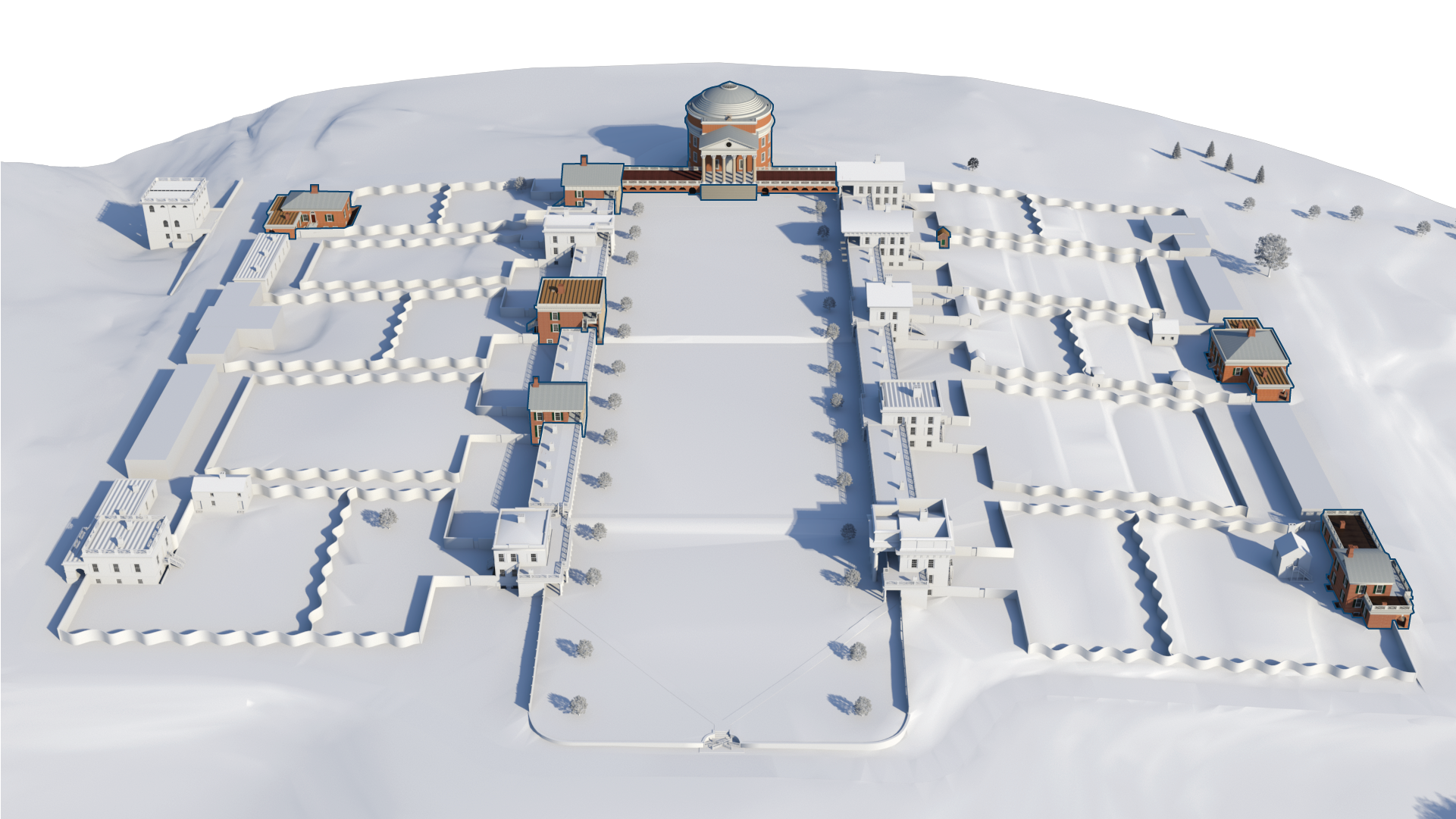Construction at the University of Virginia
Thomas Jefferson emulated Andrea Palladio’s depictions of classical
architecture at the University of Virginia, both to implicitly uphold
the democratic ideals of ancient Rome but also to elevate American
architecture by serving as built models. However, this idea of democracy
is in stark contrast to the realities of constructing and maintaining an
early 19th century university in the American south. The truth is that
Jefferson’s University was largely built by the labor of enslaved
African-Americans. They did the hard work of leveling the Lawn’s
terraces, hauling building materials, and digging foundations through
bedrock. They were highly trained brick makers, carpenters, and
stonemasons. The University’s records are silent on the vast majority of
the enslaved individuals who made Jefferson’s designs a reality, but
recent research has tried to identify the names of enslaved artisans and
delve deeper into their stories.
Explore the map below by clicking on the colored buildings to learn about the lives and work of some of
the enslaved individuals associated with the construction of the
University of Virginia.



